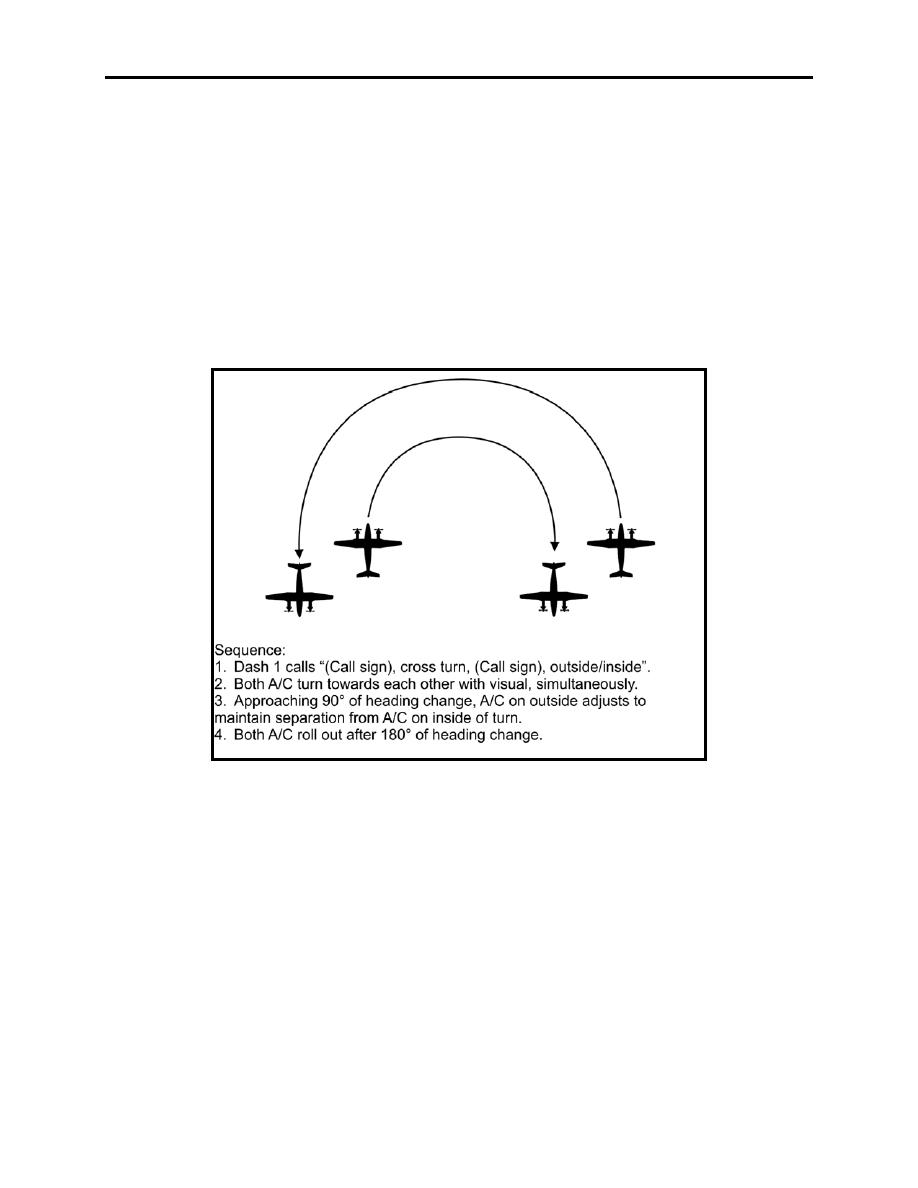 |
|||
|
|
|||
| ||||||||||
|
|  CHAPTER THREE
LOW-LEVEL AND TACTICAL FORMATION
Cross Turns
Cross turns can be performed from either the combat cruise or combat spread formation. They
involve making heading changes of 120 240 degrees. With the command Callsign, Cross turn,
180 of change is understood. If a smaller or larger change is desired, the leader may elect to
specify the new heading in the command (for example, Cross turn, roll out 145). It is understood
that lead will turn inside on a cross turn, though should still be stated. The cross turn should not
be used in situations where an aggressor might deliver ordinance at the apex of the turn since
both aircraft are closely aligned at this point. If terrain dictates the use of a cross turn during an
engagement, the wingman should climb or descend in order to break the horizontal plane.
For training purposes, the wingman shall climb +500ft for alt separation and both a/c will turn at
45 AOB.
Figure 3-8 Cross Turn
Break Turns
Break turns are maximum aircraft performance maneuvers that orient the flight toward an enemy
aircraft that has penetrated within weapons engagement parameters or that orient the flight away
from hostile ground fire. Against fixed-wing aircraft, break turns are normally used when the
attack comes from near the abeam position. The aircrew that initiates the maneuver gives the
command, (Call sign), break right, bandit 2 o'clock, level, rolling in. The aircraft on the right
side of the formation will make an immediate turn to face the enemy head-on or with a small
aspect angle. The aircrew on the far side of the formation will also turn toward the enemy, but
will continue to maneuver in order to break plane/phase and provide mutual support. The
aircraft with the best tactical situational awareness will assume the role as lead. Additionally, if
the section is engaged by a single aggressor, the aircraft engaged assumes the lead.
3-6
TACTICAL/AERIAL REFUELING PROCEDURES
|
|
Privacy Statement - Press Release - Copyright Information. - Contact Us |